NVIDIA Announces the GeForce GTX 1000 Series: GTX 1080 and GTX 1070 Arrive In May & June
by Ryan Smith on May 7, 2016 3:25 AM EST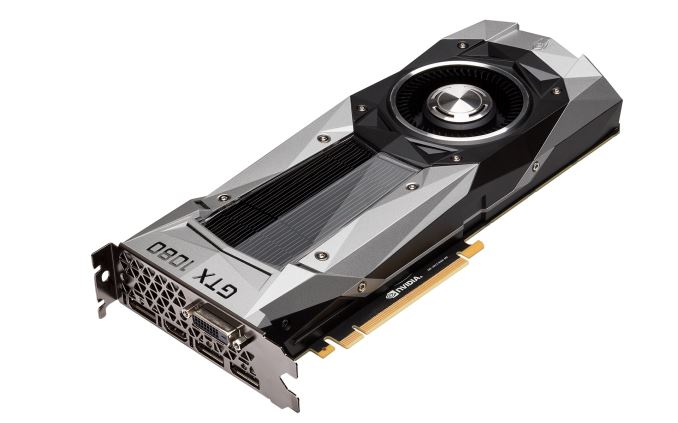
After many months of speculation – and more than a little anticipation – at an event in Austin, Texas this evening, NVIDIA announced the next generation of GeForce video cards, the GeForce 1000 series. Powered by the company’s new Pascal architecture and built on TSMC’s 16nm FinFET process, NVIDIA is promising that the 1000 series will set a new high bar for performance and efficiency while also offering a collection of new features to further set it apart from its predecessors.
The first two cards out of the gate will be NVIDIA’s high-end cards, the GTX 1080 and GTX 1070. 1080p jokes aside, these are straightforward successors to what has now been NVIDIA’s product stack naming scheme since 2010, with the GTX 1080 representing their new high-end card while the GTX 1070 is a cheaper card meant to hit the enthusiast sweet spot. These cards will be launching over the next month, with GTX 1080 hitting the market May 27th, and GTX 1070 two weeks later, on June 10th. They will be priced at $599 and $379 respectively.
| NVIDIA GPU Specification Comparison | ||||||
| GTX 1080 | GTX 1070 | GTX 980 | GTX 780 | |||
| CUDA Cores | 2560 | (Fewer) | 2048 | 2304 | ||
| Texture Units | 160? | (How many?) | 128 | 192 | ||
| ROPs | 64 | (Good question) | 64 | 48 | ||
| Core Clock | 1607MHz | (Slower) | 1126MHz | 863MHz | ||
| Boost Clock | 1733MHz | (Again) | 1216MHz | 900Mhz | ||
| TFLOPs (FMA) | 9 TFLOPs | 6.5 TFLOPs | 5 TFLOPs | 4.1 TFLOPs | ||
| Memory Clock | 10Gbps GDDR5X | GDDR5 | 7Gbps GDDR5 | 6Gbps GDDR5 | ||
| Memory Bus Width | 256-bit | ? | 256-bit | 256-bit | ||
| VRAM | 8GB | 8GB | 4GB | 3GB | ||
| FP64 | ? | ? | 1/32 FP32 | 1/24 FP32 | ||
| TDP | 180W | ? | 165W | 250W | ||
| GPU | "GP104" | "GP104" | GM204 | GK110 | ||
| Transistor Count | 7.2B | 7.2B | 5.2B | 7.1B | ||
| Manufacturing Process | TSMC 16nm | TSMC 16nm | TSMC 28nm | TSMC 28nm | ||
| Launch Date | 05/27/2016 | 06/10/2016 | 09/18/2014 | 05/23/2013 | ||
| Launch Price | MSRP: $599 Founders $699 |
MSRP:$379 Founders: $449 |
$549 | $649 | ||
The Pascal Architecture & "GP104"
While NVIDIA’s public presentation this evening was not a deep dive technical presentation – and as such there are still a number of blanks to fill in later – we still have a bunch of information to dive into. First and foremost, let’s talk about the GPU. NVIDIA is not using the GPU’s name, but in their presentation they did confirm that it had 7.2B transistors, and as such making it clear that this is a new Pascal GPU and not a cut-down version of the 15.3B transistor GP100. For the moment I am assuming this is GP104 – following NVIDIA’s traditional naming scheme – but this is subject to confirmation.
GP104, as you’d expect, is being produced by long-time partner TSMC on their 16nm FinFET process, making this the first consumer GPU built on the 14/16nm processes to ship when it hits the streets later this month. It goes without saying that the GPU industry has been stuck on 28nm for much longer than usual – GK104 to GP104 will be 4 years and 2 months – so this a long-awaited opportunity to jump to a smaller feature process and reap the power and performance benefits that entails.
At this time we don’t know GP104’s die size, but at fewer than half the transistors than GP100 it’s a safe bet that this is a die size in-line with previous first-run 104 GPUs such as GK104 and GF104, which were 294mm2 and 332mm2 respectively. GM204, by comparison, was a larger GPU, coming later in the lifetime of the 28nm process. What this means is that NVIDIA has spent some of their 16nm savings on bringing the die size back down as compared to GM204. 16nm is still relatively early in its life, and unlike Tesla P100 where customers will pay very high prices for early access to a lower-yielding chip, for consumer parts NVIDIA has needed to be more conservative. On that note, at this time it is not clear whether the GP104 in GTX 1080 is a fully enabled GP104 GPU, though traditionally it has been.
Pascal of course isn’t just NVIDIA’s 16nm architecture, but it is their successor to Maxwell. We know from NVIDIA’s previous Tesla P100 announcement that the company has opted to pay special attention to CUDA Core efficiency with Pascal, improving the throughput of the architecture as opposed to adding a significant number of additional CUDA cores. As a result, like previous architectural shifts, core-for-core comparisons are going to be tricky thanks to GP104 hitting a higher percentage of its theoretical throughput in practice. I’m still waiting on more technical details on GP104, and whether certain improvements like the larger register file have been carried over. Otherwise NVIDIA is promoting a 2x efficiency increase in Pascal versus Maxwell for gaming purposes.
On top of that 2x efficiency improvement – and how NVIDIA gets to their claimed 3x efficiency improvement over GTX Titan X – Pascal implement some new features that developers can tap for improved performance. Key among these is Simultaneous Multi-Projection, a technology that allows Pascal to create up to 16 viewports. NVIDIA is promoting the tech as being especially well suited for more efficient implementations of VR lens distortion correction (Lends Matched Shading) and rendering the same scene twice in VR – once for each eye – in a single pass (Single Pass Stereo), along with easier correction for distortion when using a multi-monitor setup.
Truth be told at this time I do not know how Simultaneous Multi-Projection Differs from NVIDIA’s previously announced features for Maxwell: Multi-Projection Acceleration and Multi-Res Shading. NVIDIAs description of SMP is very similar to these, as are the underlying algorithmic tweaks of reprojecting geometry and shading different parts of a frame at different resolutions.
A final new GPU-level feature on GP104 and the new GTX 1000 series cards is GPU Boost 3.0. Information about this is limited, but NVIDIA is saying that it supports more advanced overclocking functionality than has been present over the last couple of years with GPU Boost 2.0.
Meanwhile from a feature standpoint, NVIDIA has confirmed that GP104 cards will be DirectX feature level FL12_1 capable. Though as FL12_1 allows multiple tiers of certain sub-features, it’s not clear at this time whether Pascal supports higher tiers of those features. On the display side of matters, GP104’s display controller will support the newer DisplayPort 1.3 and 1.4 standards. Officially the cards are being called “DisplayPort 1.2 Certified, DisplayPort 1.3/1.4 Ready,” the distinction being that the latter is not currently certified, though I suspect the DP 1.3/1.4 certification process may itself not be ready yet.
Turning over from the GPU to memory, whereas GP100 was the first NVIDIA GPU to support HBM2, GP104 will be the first GPU to support GDDR5X. An updated version of the GDDR5 standard originally announced by Micron and more recently approved by the JEDEC, GDDR5X iterates on the technology to improve memory bandwidth. At a basic level, GDDR5X increases the overall capacity of the memory bus by moving from double-pumping (DDR) to quad-pumping (QDR), pairing this change with a larger memory prefetch to feed the faster memory bus, all while avoiding a more painful/difficult increase in the memory core clock.
GDDR5X will allow NVIDIA (and other vendors) to increase memory bandwidth while following more traditional GDDR5-style memory designs, rather than more complex designs like HBM. At the same time this also allows a single GPU to easily support a newer memory standard and the older GDDR5 standard at the same time, as the latter will remain a cheaper memory technology for some time. NVIDIA will be putting this feature to good use in enabling the GTX 1080 to run GDDR5X, while the GTX 1070 will run GDDR5.
Finally, not touched upon in NVIDIA’s initial presentation is that GP104 will use a newer version of NVIDIA’s SLI technology. Dubbed SLI HB (High Bandwidth), SLI HB will double the amount of bandwidth available between paired cards. At the same time this change will require a new SLI HB bridge, presumably to be compliant with the tighter signal integrity requirements a higher bandwidth link would require. NVIDIA is producing the new rigid bridge with their usual flair for industrial design, and so far I have not heard anything about the older non-rigid bridge making a return. In which case buyers will need bridges specifically sized for the slot arrangement of their board.


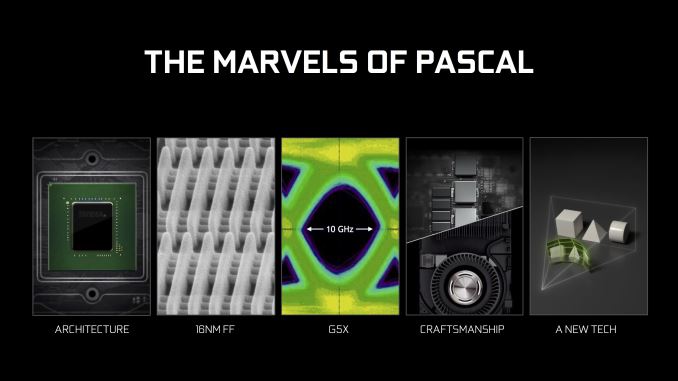
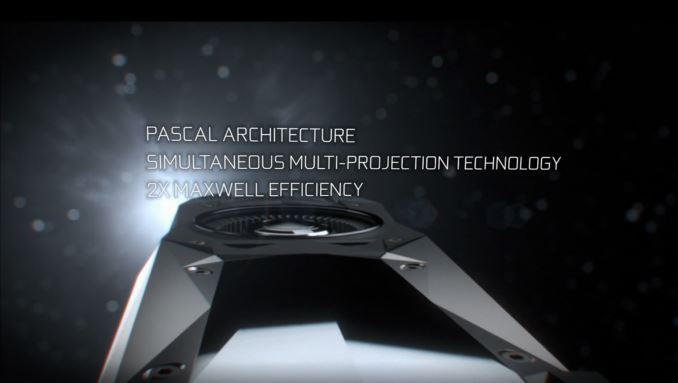
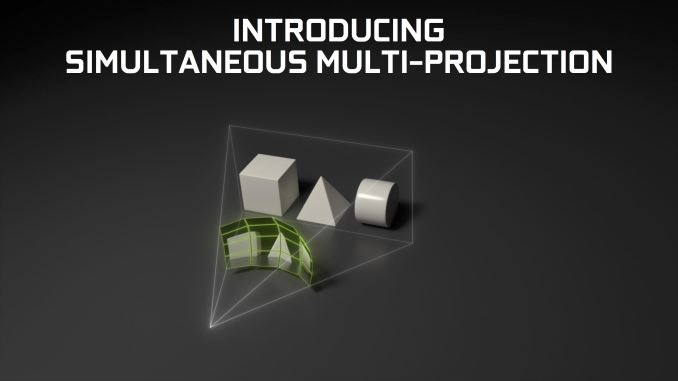
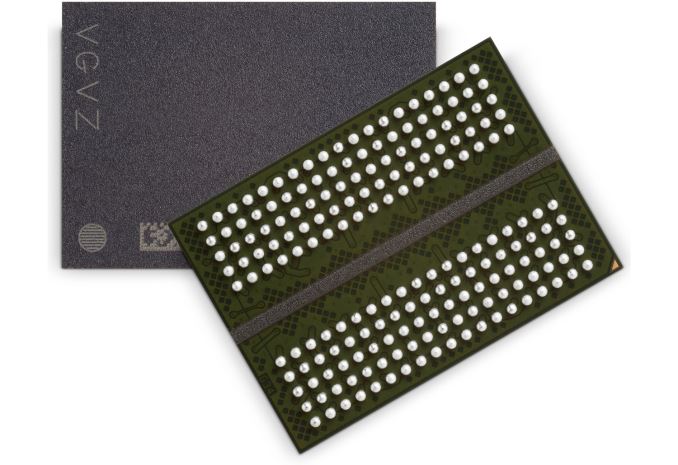
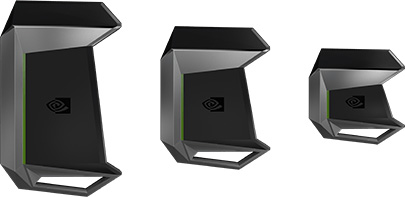














234 Comments
View All Comments
Kutark - Thursday, May 12, 2016 - link
Oh The Time™ has definitely come.Even a 1070 is going to be a light years improvement over a 580.
BrokenCrayons - Monday, May 9, 2016 - link
It's an interesting announcement, but in some ways rather disappointing too. The 1080 is suffering from wattage creep as it now requires more power than the card it was meant to replace. Yes, there's more performance too, but I was hoping that the focus would be on getting power consumption and heat output under control with this generation as opposed to greater performance which is probably being driven by the soon-to-flop VR fad. This is yet another GPU in a long like of Hair Dryer FXs that started with the 5800 and that silly fairy girl marketing run.It'll unfortunately probably be at least a year until the GT 730 in my headless Steam streaming box gets a replacement unless AMD can come through with a 16nm card that meets my requirement. I'm in no hurry to replace my desktop GPU, but when I do, I would much prefer a sub-30 watt half-height card over one of these silly showboat toys.
jzkarap - Monday, May 9, 2016 - link
"soon-to-flop VR fad" will be tasty crow in a few years.dragonsqrrl - Monday, May 9, 2016 - link
I'm curious about your perception of 'wattage creep'. The only way I could see this having any validity is if your only point of comparison is the 980. 180W TDP is not at all unusual for a x04 GPU. The 560Ti had a 170W TDP, and the 680 195W. The point of improved efficiency isn't necessarily to reduce power consumption at a given GPU tier, it's to improve performance at a given TDP. That's how generational performance scaling works in modern GPU architectures. So I'm not sure what you were expecting since the 1080 achieves about 2x the perf/W of the 980Ti. And your comparison to the 5800 falls so far outside the realm of objectivity and informed reality that I'm not even sure how to address it.In any case the 1080 clearly isn't targeted at you or your typical workload, so why do you care? In fact its most relevant attribute is its significantly improved efficiency, which you should be excited about given the implications for low-end cards based on Pascal. Are you suggesting that merely the existence of this type of card somehow poses a threat to you or your graphics needs?
AnnonymousCoward - Monday, May 9, 2016 - link
Very well said. And this guy wants <30W! He might as well stick to iGPU.BrokenCrayons - Tuesday, May 10, 2016 - link
With regards to wattage creep, I only compared the new GPU to the current generation card which NV is using as a basis of comparison in its presentation materials. Prior generations aren't really a concern, but if they are taken into account the situation becomes progressively more unforgivable as we iterate backwards toward the Riva 128 as power requirements are significantly lower despite the less efficient design of earlier graphics cards.I also don't think it's fair to take into account a claim of 2x the performance per watt until after the 1080 and 1070 benchmarks are released that give us a better idea of the actual performance versus the marketing claims as those so rarely align. However, if I were to entertain that claim as accurate, I'd find the situation even more abhorrent since NV failed to take the time to use the gains in efficiency to do away with external power connectors and dual slot cooling, both of which go against the grain of the progressively more mobile and power efficient world of computing in which we're living now. It's as if they decided the best solution to the problem of graphics was "make it bigger and more powerful!" That sort of approach doesn't actually impress people who aren't resolution junkies, but it's NV's business to produce niche cards for a shrinking market in order to obtain the halo effect of claiming the elusive performance crown so people buy their lower tier offerings as a consequence of the competition between graphics hardware unrelated to their current purchase.
I do suggest and maintain that the existence of high wattage, large graphics cards continues to threaten the concept of efficiency. There's only so far down that any given design can scale efficiently. By failing to focus exclusively on efficient designs, NV is leaving unrealized performance on the table. Once again, that's their concern and not mine. However, I would prefer they announce and release their low end cards first, bringing them to the forefront of the media hype they're attempting to build because those parts are the ones that people ultimately end up purchasing in large numbers as indicated by statistically significant collection mechanisms like the Steam survey.
BiggieShady - Wednesday, May 11, 2016 - link
Also existence of croissants is threatening the concept of muffins, and existence of space shuttle is threatening the concept of a bicycle.dragonsqrrl - Thursday, May 12, 2016 - link
The problem is modern performance scaling, particularly with GPUs, works differently than it did 1 to 2 decades ago. Now efficiency is essentially the same as performance because we've hit the TDP ceiling for every computing form factor including desktop/server (around 250-300W single GPU). As you mentioned this wasn't the case back when Riva 128 launched. The difference is chip makers can no longer rely on increasing TDP to help scale performance from one gen to the next like they could back then. For Nvidia this shift gained a lot of momentum with Kepler. So while not everything going back to the beginnings of desktop GPUs is relevant to modern performance scaling, I would argue that everything since Fermi is. This is further evidenced by the relative consistency in die sizes, naming convention, and TDPs for every GPU lineup since Fermi. The main difference from one gen to the next is performance. Fortunately it's pretty clear that your definition of 'wattage creep' died with Fermi. It's no more relevant to modern performance scaling than your reference to Riva 128 as proof of continued wattage creep.I just find it difficult to believe that any informed person familiar with the trends and progression of the industry over the past two decades would now expect Nvidia to limit TDPs to 75W, and then feel threatened when they, in overwhelmingly predictable fashion, didn't do that. I mean, what's the basis for this expectation? When have they ever launched an ultra low-end card first, or imposed such ridiculous TDP constraints on themselves relative to the norms of the time? Why does the existence of 'high' TDP cards "threaten the concept of efficiency" when TDP has no bearing over efficiency?
And it's strange that you mention steam survey in defense of your position, when the 730 isn't nearly as popular as cards like the 970, or 960. There's definitely a sweet spot, but the 730 (and other cards like it) fall far below that threshold.
BrokenCrayons - Friday, May 13, 2016 - link
I guess I'll try once more since you don't seem to understand what I'm talking about with respect to wattage creep. I've cut out the non-relevant parts of the discussion so it'll make more sense. This pretty much encapsulates what I meant: "With regards to wattage creep, I only compared the new GPU to the current generation card which NV is using as a basis of comparison in its presentation materials." I probably should have left out the historic details since you're getting awfully hung up on the Riva 128 and don't seem to acknowledge there were a few other graphics cards that were produced between it and the Fermi generation. I'm guessing that generation is probably when you became more familiar with the technology so it might make sense that the artificial cut-off in acknowledging graphics card power requirements would begin there. So, for the sake of your own comprehension, the wattage creep thing that you're stuck on is the increase between the 980 -> 1080 and nothing more. We probably shouldn't look at anything earlier than the past couple of years since that appears to be really confusing.To address your second point of confusion, my desire is to see the release of lower end graphics cards, starting from the bottom and working upward to the top. I'm not surprised by the approach NV has taken, but that doesn't stop me from wishing the world were different and that the people in it were less easily taken in by business marketing. I realize that very few people are ultimately endowed with the ability to analyze the bigger picture of the world in which they live without losing sight of the nuances as well, but I'm eternally optimistic that a few people are capable of doing so and just need the right sort of nudge to get there.
In fact, your third discussion point, the Steam Survey, is a pretty good example of missing fact that a forest exists because of all those trees that are getting in the way of seeing it. The 730's percentages aren't notable in relationship to the 9xx cards. In fact, what's more noteworthy is the percentage of Intel graphics cards. Intel's percentage alone ought to make it obvious that the bottom rungs of the GPU performance ladder are vitally important. Combining those with the lower end of the NV and AMD product stacks and it paints that forest picture I was just talking about wherein low end graphics adapters are an unquestionably dominant force. Beyond the Steam survey are the sales numbers by cost categories that have demonstrated for years that lower end computers with lower end hardware sell in large numbers. Though I'm probably point out too many individual trees at this point, I'll also throw in the mobile devices out there (smartphones and tablets) demonstrates how huge the entertainment market is on power efficient hardware when the number of copies of casual games by numbers demonstrates the dominance of gaming on comparatively weak graphics hardware.
dragonsqrrl - Friday, May 13, 2016 - link
Argument creep?"However, if I were to entertain that claim as accurate, I'd find the situation even more abhorrent since NV failed to take the time to use the gains in efficiency to do away with external power connectors and dual slot cooling, both of which go against the grain of the progressively more mobile and power efficient world of computing in which we're living now."
Your own words. So what you're trying to say now is that I've misunderstood. You weren't trying to say that it's abhorrent of Nvidia to not have killed off external power connectors this generation, you simply wished Nvidia would focus more on low-end cards. I love how you're now trying to paint yourself as some sort of enlightened open minded intellectual, but unfortunately your previous 2 comments aren't going anywhere.
"I probably should have left out the historic details since you're getting awfully hung up on the Riva 128 and don't seem to acknowledge there were a few other graphics cards that were produced between it and the Fermi generation."
... that's exactly what I acknowledged. In fact failing to acknowledge the rationale for the inflation of TDP between the two was exactly the part of your previous comment I tried to address. I tried to explain that the 'wattage creep' you're thinking about, in referencing the inflation since Riva 128, and that lead to a card like the 5800, is very different from the increase in TDP between the 980 and 1080. The difference now is efficiency is driving the performance scaling.
"So, for the sake of your own comprehension, the wattage creep thing that you're stuck on is the increase between the 980 -> 1080 and nothing more."
... so I think it's misinformed and misleading to simply refer to that as 'wattage creep' while referencing the 5800 and Riva as examples.
"I realize that very few people are ultimately endowed with the ability to analyze the bigger picture of the world in which they live without losing sight of the nuances as well, but I'm eternally optimistic that a few people are capable of doing so and just need the right sort of nudge to get there."
Isn't this criticism just a little hypocritical given your hard line position? You point out the inability of others to "analyze the bigger picture", but at the same time you can't seem to fathom the value of higher TDP cards, not just for gamers, but for researchers, developers, and content creators. It's much more than just the objectively unnuaunced picture you're portraying of ignorant "resolution junkies" being taken in by marketing and "silly showboat toys". Again, you say that higher TDP cards "threaten the concept of efficiency", which is ironic since the 1080 is the most efficient card ever, and TDP has nothing to do with efficiency.
"The 730's percentages aren't notable in relationship to the 9xx cards. In fact, what's more noteworthy is the percentage of Intel graphics cards."
How is that noteworthy in the context of your argument? You discussed the popularity of ultra low-end discrete cards to help bolster your position, did you not? How do iGPUs that come with most Intel processors by default support that?
"Combining those with the lower end of the NV and AMD product stacks and it paints that forest picture I was just talking about wherein low end graphics adapters are an unquestionably dominant force."
True, but I doubt ultra low-end, like you've been promoting, would make for quite as compelling an argument. Hopefully your position hasn't migrated too much here either. You did say, "I would much prefer a sub-30 watt half-height card over one of these silly showboat toys". I could also add up cards like the 970, 960, 750Ti, 760, 660, etc. and make a pretty compelling argument for the popularity of higher-end cards.